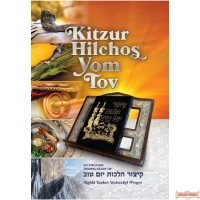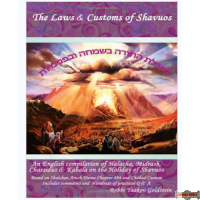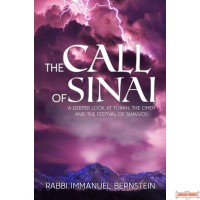Shavuos
Kitzur Hilchos Yom Tov, An English translation of the immensely popular sefer on the laws of Yom Tov
As in Hilchos Shabbos, in Hilchos Yom Tov we have followed the "derech kitzora" (path of brevity), and have concentrated primarily on acquainting the reader with the main principles of the laws of Yom Tov. In addition, we have presented a number of practical applications. Thus, one will be equipped to ask one's Rav for further guidance after studying this sefer.In Hilchos Shabbos we organized the sefer in accordance with the sequence used by the Chayei Adam in his sefer Zichru Toras Moshe. Likewise, in Hilchos Yom Tov as well, we have organized the sefer according to the arrangement of the Chayei Adam, which follows the order of the thirty-nine Melachos. Thus, each chapter in this sefer parallels the corresponding chapter in Kitzur Hilchos Shabbos.
The advantage to this system is that one who has already studied the laws of Shabbos from our sefer can now easily find the halachos of Yom Tov relevant to that subject in the same chapter as that topic is discussed in Hilchos Shabbos. Moreover, within each chapter, one can frequently follow the order of the numbers assigned to each subtopic, and thereby see how the halacha in regard to Yom Tov differs from Shabbos. Learn More
- Each year, as the festival of Shavuos approaches, a number of questions that are relevant the entire year-round take on a timely significance:· What is Torah, exactly — and what specific role does Torah study play?· What does the Revelation at Sinai have to do with me in my day-to-day living?· How was the Torah given, and why does it matter?· How do the laws and customs of Shavuos reflect our receiving the Torah?· How does counting the Omer prepare us for any of this?Drawing on a wide array of sources from throughout the generations, renowned teacher and author Rabbi Immanuel Bernstein discusses these and many more fundamental questions, providing the reader with a deeper understanding of Torah, Shavuos and ultimately, Judaism itself. Learn More






